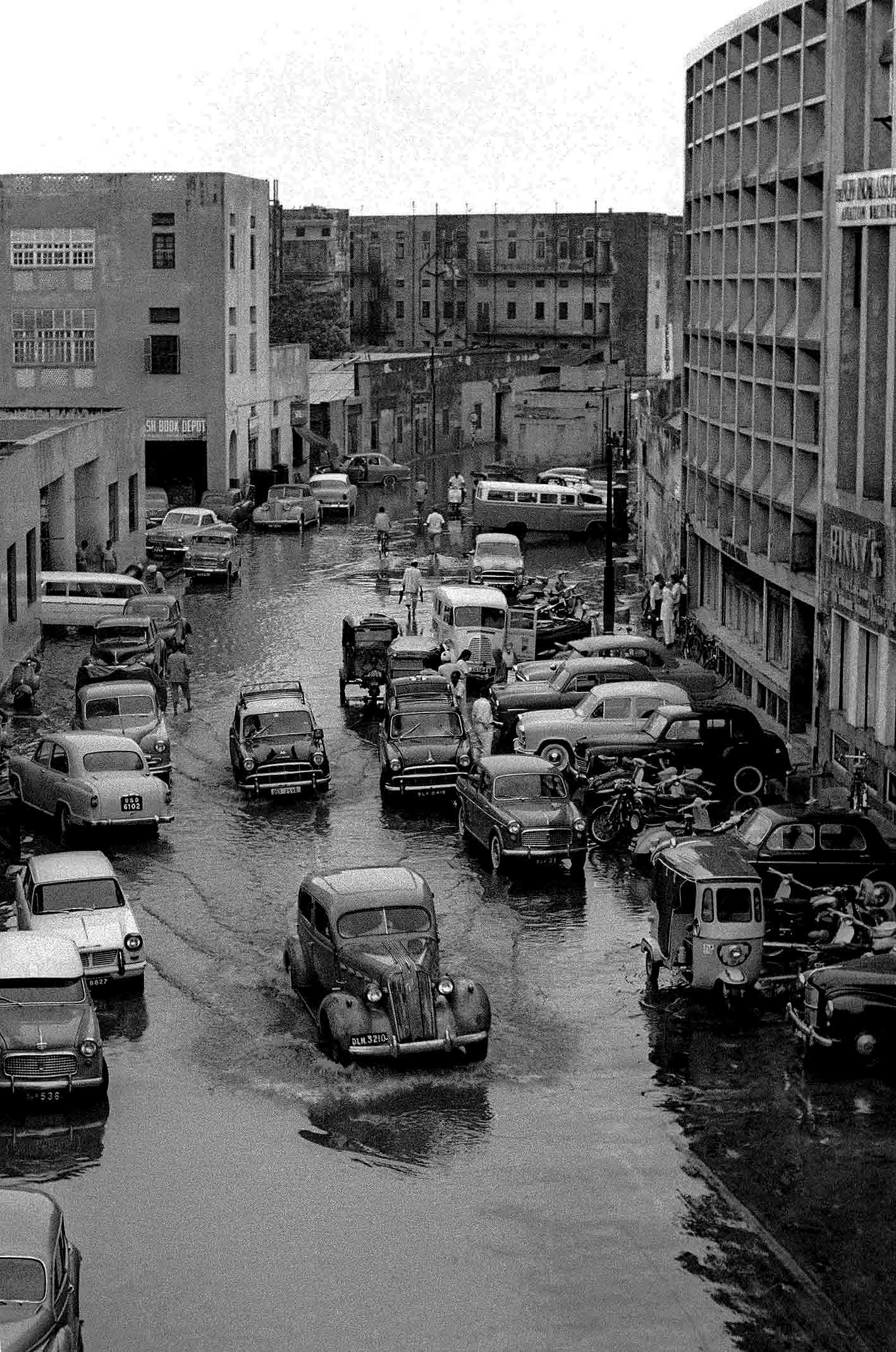
As you open the glass doors and walk into Ojas Art Gallery, you step into a time machine, the one that takes you to the erstwhile and perhaps lost splendour of the Capital.
Quite interestingly on display at a time when the city is debating over the plan of revamping Lutyens Delhi, this exhibition has photographs from the 1940s to the 1990s. Featuring iconic monuments and architectural structures that are synonymous to Delhi, these images will transcend you to the bygone.
Taken from the archives of three maestros – Habib Rahman, Madan Mahatta and Raghu Rai — this group show displays over 45 photographs that show Delhi like you have never seen before.
Mostly in black and white, with a couple of colour images, the photos draw you in and compel you to envision a city of the past.
“The majestic monuments, the magical lanes, when the sky wasn’t laden with smog and when the nights were heavy with stars,” reads a note of the exhibition that perfectly captures the essence of the exhibition.
Aptly titled Delhi That Was, the shots explore the architecture, monuments and lifestyles that are unique to Delhi and span over five decades. Together, they comprehensively capture the aesthetics of Delhi in variegated glory before it was transformed by concrete constructions which have left many aggrieved and nostalgic for yesteryears.
Each of the photographs have been carefully selected, in order to make it more engaging. “We have mostly chosen monuments that are easily recognisable, which makes it more relatable for the people. I particularly did not choose quaint gulleys of old Delhi or drawing room pictures of popular icons because I wanted people to come in and recognise the places they have already been to,” explains Anubhav Nath, curatorial director of the gallery.
From Parliament House, Qutab Minar, Humayun’s Tomb, Jantar Mantar to aerial shots of Connaught Place, viewers simply can’t help but compare it with current times.
Not just architectural marvels, the show also displays some of the most iconic moments the city has experienced. One of Nath’s personal favourite is a remarkable photograph of a Pierre Cardin fashion show happening in 1967 in the city with India’s then first family sitting in the front row.
In another series of epochal frames that capture Delhi in its golden era, one of Madan Mahatta’s works speaks volumes and perfectly presents this very spirit. Having opened his studio, Mahatta & Co. at CP in 1947, he had a special affinity for this place as can be seen in his shots.
A 1961 photograph of Queen Elizabeth and Dr Rajendra Prasad’s motorcade passing through CP is one of his works that catches your attention. People crowding and almost hanging out from the balconies and rooftops of the colonnaded buildings that are not so accessible now, along with hoardings of shops that remain even today, shows the disparity as well as aspects that have remained the same in the city.
It isn’t just the shops, another image of Mahatta shows the waterlogged streets of CP during rains in 1970 – a problem that persists even today in the city. Similarly, another photograph clicked by Raghu Rai captures the traffic in front of Jama Masjid, a scene that remains the same, “except for model of cars and the increasing level of honking,” Nath points out.
Beyond the physical attributes that remain unique to the city, some of the behavioural characteristics have also stayed the same. As Nath puts it, “Babudom, the ‘mera baap kaun hain’, the laidback attitude has been there since forever.”
Nath clearly agrees with the fact that Delhi is increasingly becoming a difficult city to live in, given its loudness, boisterousness and pollution. Having said that, he also points out that there is just something about this place that continues to draw people in.
“Personally, with centuries of family history in Delhi, I am the quintessential Delhiwallah, and no other city even comes close to Delhi. The only place that may be better than Delhi as it exists today is the city as it existed in the past, the Delhi that was. This exhibition features that,” states Nath.
This show gives the audience a gateway to a more charming, bustling yet relaxed, more magical Delhi. As Rai states, “Today when I look back at some of the pictures that I took 30-40 years ago, what emerges is a Delhi that does not exist anymore, or has changed so drastically. These images stand as a testimony of photo-history that cannot be re-written.”
The exhibition is on display
at Ojas Art Gallery till November 12
The decline is primarily due to damage to the "heart-brain link" triggered by chronic kidney…
A French-style open-air café is drawing Delhiites back to a river they long forgot
The handset features a dual rear cameras, 6.72-inch 144Hz display, IP64 water resistance, and up…
Delhi Police raided a late-night illegal bar in Samaypur Badli, detaining 25 people and seizing…
A rear-end crash near Delhi Haat triggered a blaze that gutted both vehicles, though no…
Court grants probe agency more time as NIA pursues wider links in Red Fort blast…